Historical Overview
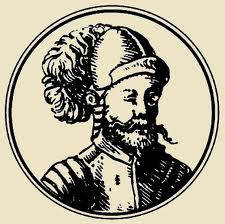 In XIV century Pomorze Zachodnie (Western Pomerania) was divided into a number of small duchies, each pursuing its own, more or less independent, policy. Bogusław IV has reigned in Wolgast district since the year 1295. Meanwhile, Otto I reigned szczecinski district. The Duchy of Szczecin included then the area at the lower Oder River and to the south of the Peene River, including Uznam and Wolin islands and the areas to the east of Kamien and Stargard, up to the Land of Kolobrzeg (since 1248 it has belonged to the bishops of Kamień).
In XIV century Pomorze Zachodnie (Western Pomerania) was divided into a number of small duchies, each pursuing its own, more or less independent, policy. Bogusław IV has reigned in Wolgast district since the year 1295. Meanwhile, Otto I reigned szczecinski district. The Duchy of Szczecin included then the area at the lower Oder River and to the south of the Peene River, including Uznam and Wolin islands and the areas to the east of Kamien and Stargard, up to the Land of Kolobrzeg (since 1248 it has belonged to the bishops of Kamień).
It survived intact until the death of Duke Otto in 1344. At that time, his only son Barnim III took control of it and ruled until the year 1368. In 1317 Wolgast Duchy was extended to Slupsk and Slawiensk Land, and in 1325 to the land of Rugia Duchy. After the death of Duke Boguslaw IV in 1309, his only son Wartislaw IV succeeded to the throne.
It was him who founded Szczecinek. Location of the town was not a matter of chance. Situated on the isthmus of two lakes, among seemingly inaccessible swamps and wetlands, made a great border fortress. Already in the early Middle Ages, there was a fortified settlement on the so-called Przemyslaw Hill (also known as the Hill of Bismarck), and in its immediate vicinity also two other Slavic settlements: "Trzesieka" and "Castle".
According to political plans of Wartislaw IV, the role of Szczecinek was to act as a very important border fortress protecting the Duchy against the territorial expansion of the Margraviate of Brandenburg that began to threaten the political interests of the Griffins at the turn of XIII and XIV centuries. The name of the town clearly referred to Szczecin, the capital of the Duchy of Pomerania. It was awarded the coat of arms consisted of the ducal black griffin against a golden background, and a sturgeon that was rare in the areas even in the Middle Ages. Since XIV century, the connections between Western Pomerania and Poland have strengthened. In 1341, King Casimir the Great promised the Duke of Pomerania Boguslaw V one of his daughters, Elizabeth. This agreement in this respect was finally concluded in February 1343 in Poznan.
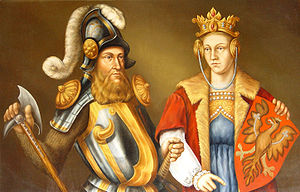
The Polish ruler used his relations with Pomeranian dukes in an attempt to regain Santok and the Land of Walcz that directly connected Poland and Western Pomerania. Casimir IV, Duke of Slupsk, grandson of the last member of the Piast dynasty, was even taken into consideration as a successor to the throne of Poland. However, the nobility of Lesser Poland destroyed the succession document after the death of the Polish king and finally the grandson of the last Piast never sat on the throne of Poland. Casimir IV, Duke of Slupsk, took power only over the Dobrzyn Land, Bydgoszcz, Zlotow and Walcz, as they were fiefdoms of the Crown.
Whereas his mother, Elizabeth of Poland, Duchess of Pomerania, in her attempt to escape the plague raging in Pomerania, took refuge in the monastery of Szczecinek, Marientron, where she died in 1361. Pomeranian-Polish relations intensified during the reign of Wartislaw VII, Boguslaw VIII and Barnim V. Probably they were affected by the policy the Teutonic Order. Pomeranian Dukes concluded then alliances with the Polish king Wladyslaw Jagiello (Boguslaw VII in 1393, Barnim V in 1401, and Boguslaw VIII in 1403). An important event in the history of the town was an anti-Polish convention involving the Grand Master of the Teutonic Order Ulrich von Jungingen, Swantibor I of Szczecin and Boguslaw VIII of Slupsk, which took place at the local castle. Interesting is the fact that, despite military obligations to the Teutonic Knights, none of them took part in the war with Poland on the side of the Order. 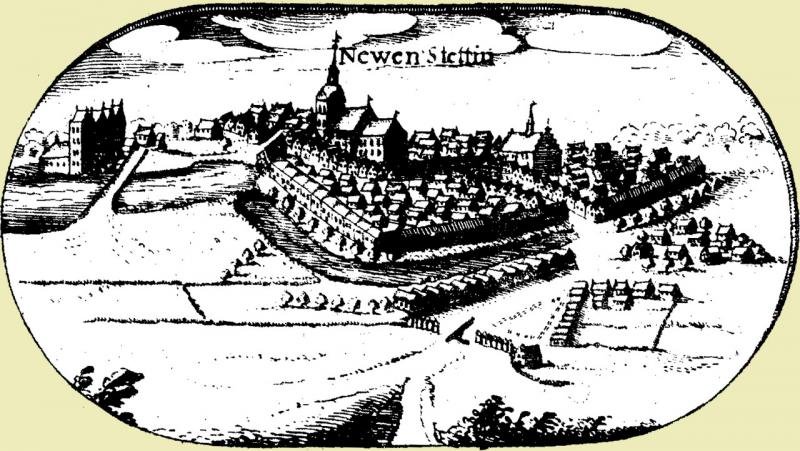
Only the Duke of Szczecin Kazimierz supported the Teutonic Order in the Polish-Teutonic War (1409-1411). In 1410, in the camp of Grunwald, Duke Boguslaw VIII was given Bytow as a fief by the Polish king, which, however, under the first Peace of Thorn (1411) was again within the boundaries of the Teutonic Prussia. It was only in 1466, after the second Peace of Thorn, when the Land of Lebork and Bytow was incorporated into Western Pomerania. A similar convention was held in Szczecinek in 1423. Then the castle of Szczecinek hosted, in addition to the Pomeranian dukes and prelates, Eric I of the Griffin dynasty - the King of Denmark, Sweden and Norway.
Thirteen Years' War (1454-1466) was a very turbulent period for Szczecinek. Manoeuvring between Poland and the Teutonic Order was for the Griffins sometimes too hard, and most importantly, did not always bring political results. Sometimes the conflict between the powerful neighbours indirectly affected the Duchy of Pomerania. It was so in 1455, when the Vogt of Szczecinek - Kurd Glasenapp - in the result of the ravages made by the Teutonic Order army in several border villages, was forced to terminate the peace agreement to them. However, it was Polish military invasion supported by the Tatars that took place in 1461 that turned out to be the worst for the Szczecinek Land. Polish king Casimir IV, trying to force Eric, the Duke of Pomerania, who was allied with the Teutonic Order, to change his policy and take a clear stand by the Polish side, invaded Szczecinek.
This invasion was not an arbitrary foray of insubordinate army, but a consciously planned military trip. Anyway, it is clear that Casimir IV was well aware of the expedition of volunteers and Tatars to Szczecinek and fully approved of that military action. Since 1466 and the signing of the Peace of Torun, there have been no mentions of raids on the lands of the Duchy of Pomerania and Szczecinek in the Polish historiography. Therefore, you can conclude that the defeat of the Order and taking control of the lands of the former state of the Teutonic Knights by the greatest Jagiellonian stabilised the situation at the Pomeranian-Polish border.
XVI century and the reign of Boguslaw X was the period of relative peace and propsperity in the history of Szczecinek. It was only in the years 1581-1592 when, similarly as in the whole Pomerania, the social unrest intensified, and in the case of Szczecinek took the form of fighting witches. Almost 30 people were burned for witchcraft at that time in our town. Thirty Years' War (1618-1648) was one of the worst periods in the history of the town. The marches of all the fighting armies, robberies, assaults and finally the plague ravaged Szczecinek on an unprecedented scale. The only positive at that time was the founding of a middle school in 1640 by Hedwig of Brandenburg, Duchess of Brunswick-Wolfenbüttel; it was one of the first middle schools in Western Pomerania. 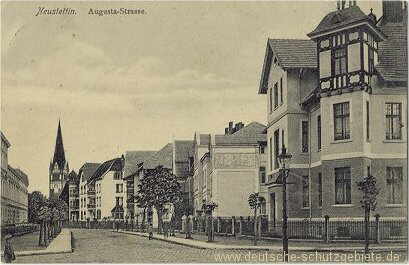
End of XVIII and XIX century brought further development of the town. In 1724 Szczecinek District was established, in the years 1780 to 1784 the water table of Wielimie and Trzesiecko lakes was significantly lowered, thus allowing further territorial development. Napoleonic Wars briefly disrupted this successful development. In February 1807, Szczecinek was occupied by troops of General T. Lubienski's division. Over following years, tens of thousands of troops were quartered here. The defeat of the Grand Army and its retreat from Moscow also affected Szczecinek. More than 100 soldiers who died of cold and exhaustion were buried here in several mass graves. In the inter-war period the town became a famous and popular tourist destination.
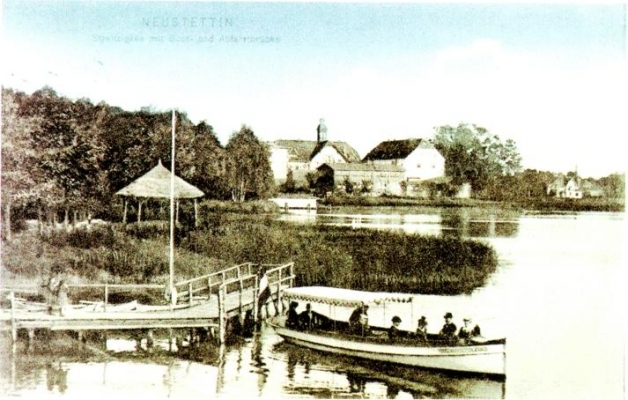
Much of the credit was due to good railway lines, in consequence of which Szczecinek became a major transport hub in
Pomerania. At the times of Hitler, two large complexes of barracks and fortification system for the Pomeranian Wall were built to the west of the town. It is here from where the Armoured Corps of General H. Guderian moved into Poland in September 1939. The town was won on 27 February 1945 (and not on 28 February, as it was thought until recently) by the troops of 32nd Guard Cavalry division under the command of General J.P. Kalużny, after a brief, just one-day battle. As the consequence of the war, all the then population was displaced to Germany (among others around Eutin) and replaced by emigrants from the former Polish territories beyond the river Bug and central Poland.ia
Pomeranian Duke's Castle in Szczecinek
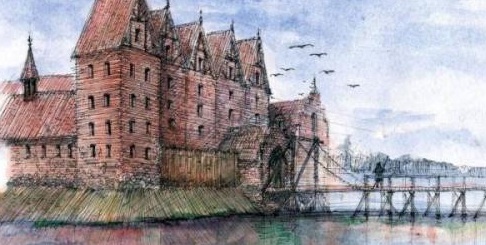
As early as at the end of XIII century, there was a Slavic settlement on the island nearby the place from which the Nizica River flows. The border nature of the settlement and its excellent defensive qualities contributed to the decision made around the year 1310 by Duke Warcislaw IV to build there a castle. This way the castle of Szczecinek became the seat of Starostes who in the name of the duke held the power here. First of them was Otto von Wedel. At the same time, the settlement on the mainland was awarded town privileges.
The location of the castle in Szczecinek was also affected by building a fortress in Czluchow by the Teutonic Knights and the growing threat from the Teutonic Order and Brandenburg. In 1356, the buildings from the times of Wartislaw IV were dismantled and a new castle was built from the obtained material, this time fully made of bricks. At the very beginning, the castle consisted essentially only of the south wing. The courtyard was surrounded by a wall and all the buildings were settled in a rectangle related plan. 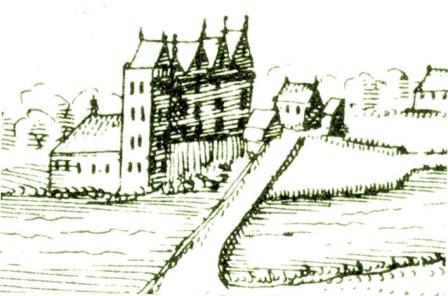
The gate was facing the city, which means it was north-facing. The wooden bridge supported by characteristic piles, known for the later drawings, connected it with the mainland. The construction of the castle was carried out until the year 1364. However, there were a few interruptions. The first one took place when the border of the Teutonic Knights state was moved, as a result of which Szczecinek partly lost its military and strategic importance. However, by the end of XIV century, the works resumed and even another floor of the main wing was built.
The north wing which included the entrance gate was probably built during the expansion carried out in the years 1459-1474, at the times of Duke Eric II. The building had three floors and there was a four-sided tower at the eastern corner. In the years 1606-1610, Duke Philip II rebuilt the south wing giving it a shape typical of Renaissance architecture. In 1619, Duke Ulrich erected in place of the dismantled north wing a new one, which survived until 1801. Another reconstructions took place in 1690 and 1780. The building was also reconstructed several times during XIX and XX century. In 1653 the castle was taken over by Brandenburg and as a result it began to fall into decline. In the years 1780 to 1793 it housed Frederick the Great's abdominal belts manufacture. In the years 1800-1880, in turn, it served as hospital and poorhouse. During World War II, if you believe some stories, the castle was a Gestapo torture chamber in which, among others, soldiers of Battalion "Odra" were interrogated.
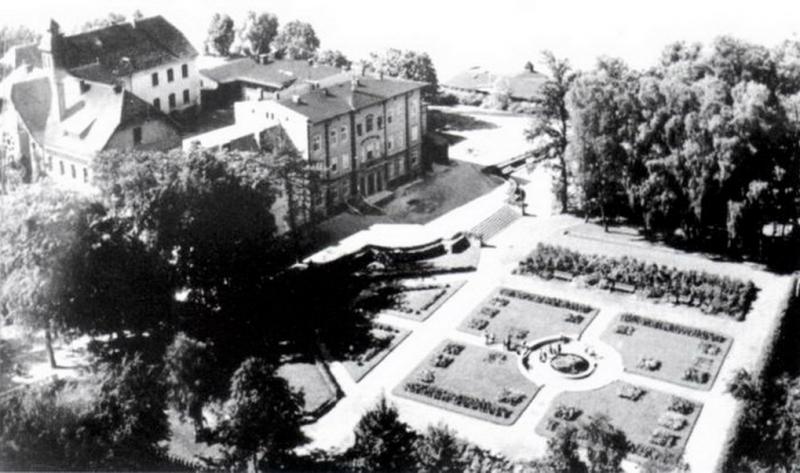
After the war, the army occupied the castle and later it served as Jantarii travel lodge. In 2011, the Municipal Office of Szczecinek began a comprehensive revitalisation of the historic south wing of the castle, which will serve as a training and conference center. The estimated completion date is September 2013.
Timeline of major events
1310 - construction of the castle, the seat of Starostes, began by the order of Duke Wartislaw IV
1356-1364 - existing buildings were dismantled and brick south wing was built from the lakeside, later known as the knights house
1409 - anti-Polish convention involving the Grand Master Ulrich von Jungingen and Dukes Swantibor I of Szczecin and Boguslaw VIII of Slupsk
1423 - another anti-Polish convention involving, among others, Eric I, the King of Denmark, Sweden and Norway, the Grand Master of the Teutonic Order Paul von Russdorff and West Pomeranian Dukes Otto II of Szczecin, Kazimierz V of Szczecin, Wartislaw IX of Wolgast, Barnim VII of Wolgast and Boguslaw IX of Slupsk 1457 (?) - the Grand Master of the Teutonic Order Ludwig von Erlichshausen stayed at the castle 1459-1474 - in the times of Eric II, the north wing facing the town, called the gate wing, was built
1606 - the castle became the widow's dowry of West Pomeranian Dukes' wives
1606-1616 - Duchess Anna, the widow of Boguslaw XIII, lived in the castle
1612 - Eilhardus Lubinus lived at the castle at the time of measurement for his Great Map of Pomerania Duchy
1623 - Duchess Hedwig of Brandenburg lived at the castle, widow of Duke Ulrich - founder of one of the first middle schools in Western Pomerania
1707 (?) - Karol Radziwill supposedly lived at the castle for a long time
fot. J. Gasiul, Tomasz Czuk, szczecinek.org.pl

 10°C
10°C
 Weather data provided by:
Weather data provided by: 








